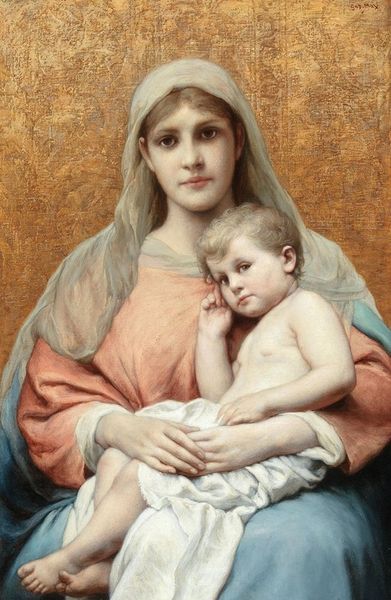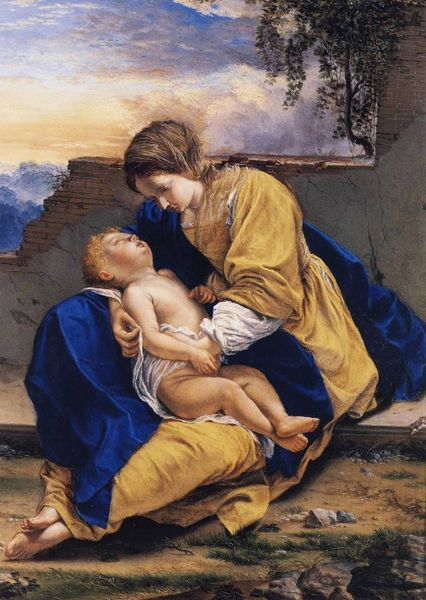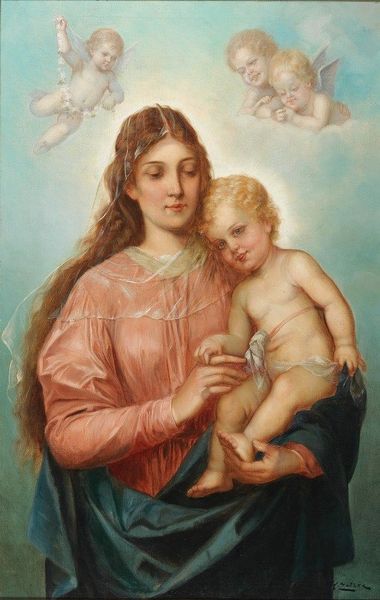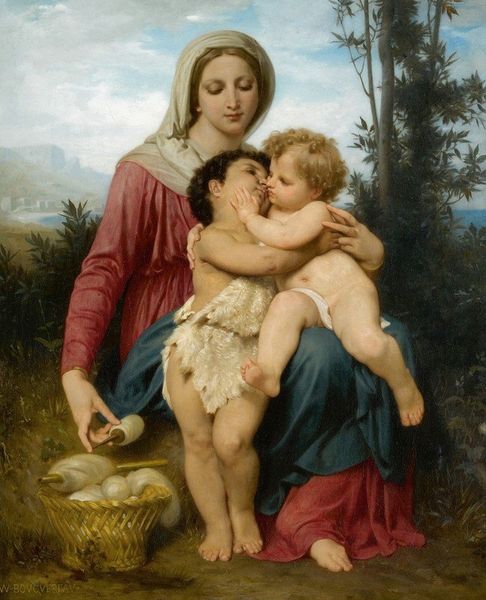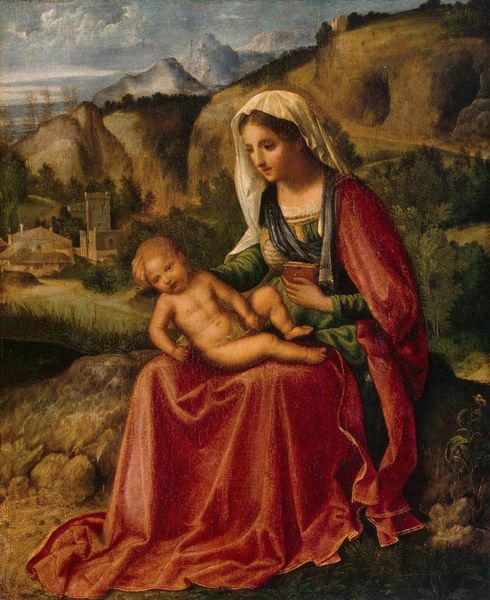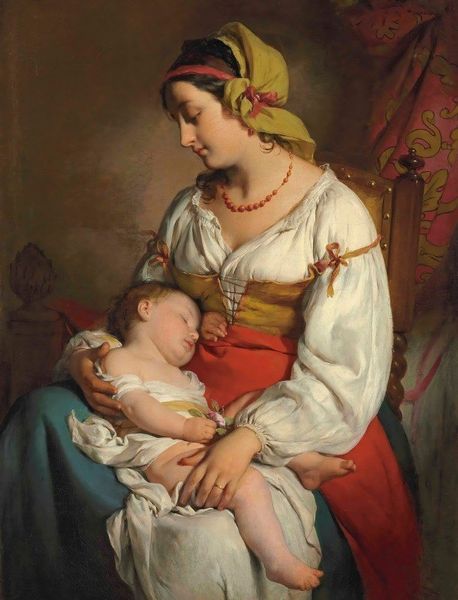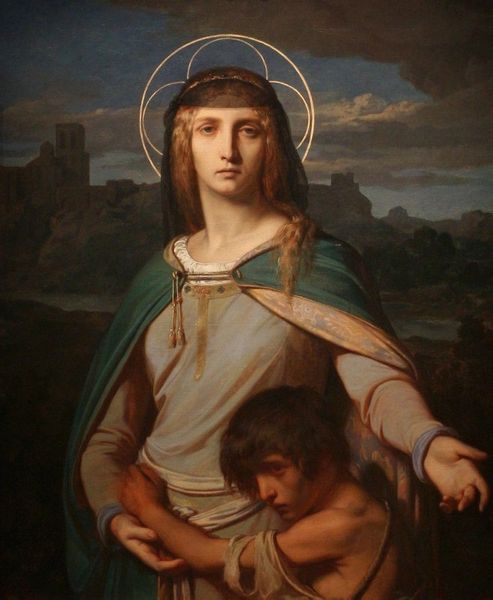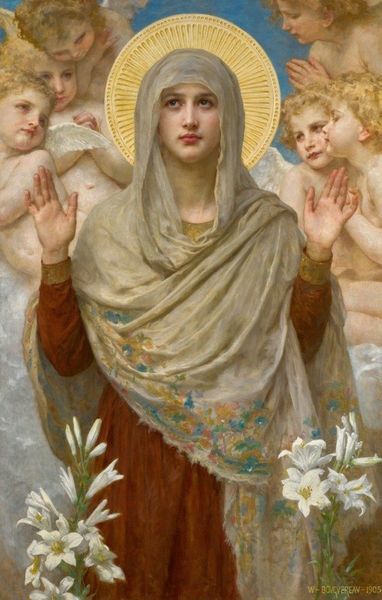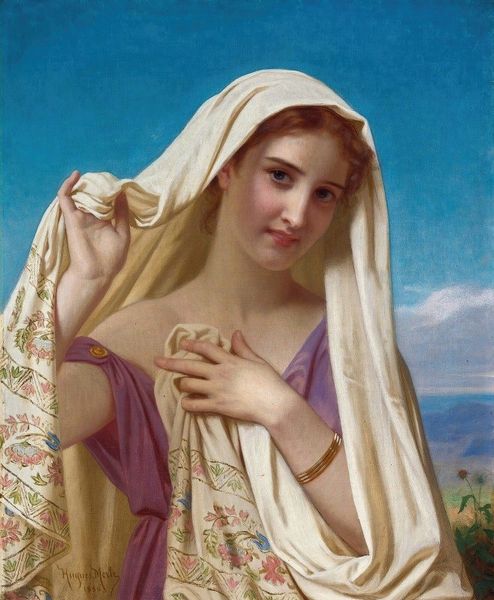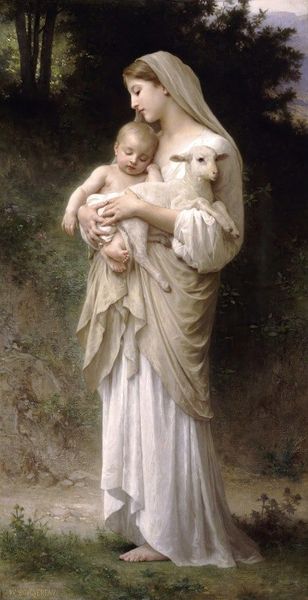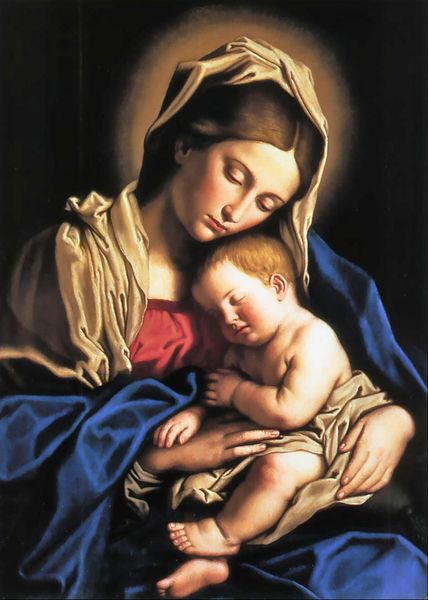
oil-paint
#
portrait
#
oil-paint
#
figuration
#
oil painting
#
romanticism
#
history-painting
#
academic-art
Copyright: Public Domain: Artvee
Curator: Paul Delaroche created this oil painting titled "The Virgin and Child" in 1844. Delaroche was quite successful as an academic history painter; he expertly balances realism and idealized beauty here. Editor: It has such a serene atmosphere. The muted tones and the gentle embrace between mother and child create a sense of peaceful contemplation. There's a palpable emotional connection; but is this 'peace' reflective of social peace? I wonder about what kinds of narratives this image would encourage in different audiences at the time, and today. Curator: That's insightful. Consider the 1840s in France: social upheaval, nascent industrialization, anxieties around traditional roles… Images of the Virgin Mary provided a very powerful cultural touchstone that reaffirmed familial and spiritual values during turbulent times. The historical context significantly impacts how the work was and is received. It's about order as much as belief. Editor: The formal presentation also speaks volumes. The pose, her modest yet elegant drapery, and the overall compositional arrangement construct and disseminate notions of idealized femininity and motherhood. What's powerful to me is the potential tension between the aesthetic beauty of the painting and the historical function it plays in reinforcing social norms. Curator: Delaroche's art reflects the aspirations of the bourgeoisie in post-revolutionary France: piety and domestic tranquility as vital bulwarks of the state. His technique echoes his ambitions: notice the painstaking detail, particularly in the rendering of fabrics and flesh. These elements catered to the expectations of the art establishment and, thus, found favor amongst critics and audiences. Editor: Exactly. The romanticized history-painting style combined with such carefully rendered details almost elevates the work beyond its potential to explore true maternal struggles or the complex experiences of women in his time. It seems to create a symbolic and sanitized narrative for public consumption, rather than depicting any form of private reality. Curator: I think that is the point. It represents a controlled narrative reflecting social expectation; so Delaroche isn't creating simply a devotional painting, but also constructing a socio-political commentary relevant to his own time. Editor: Delaroche's image is a perfect example of how aesthetics and ideology can intertwine; there is so much to consider here beyond simply the first glance. Curator: I find that by understanding that period, we can glean the image's underlying historical arguments.
Comments
No comments
Be the first to comment and join the conversation on the ultimate creative platform.

